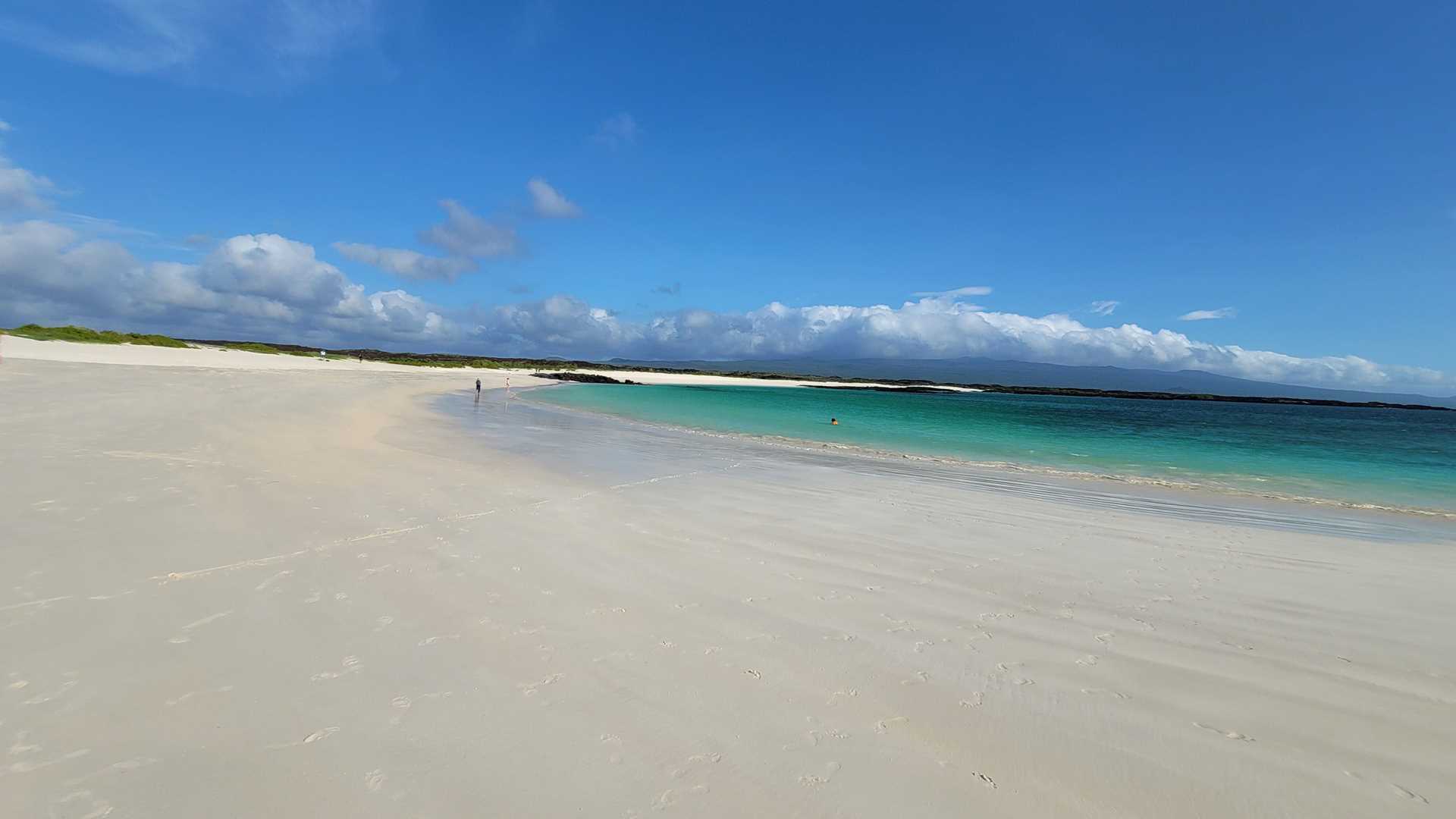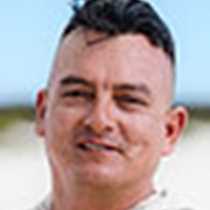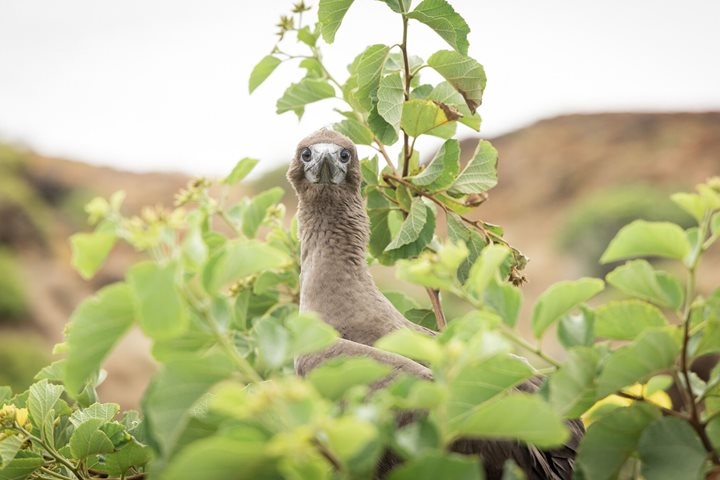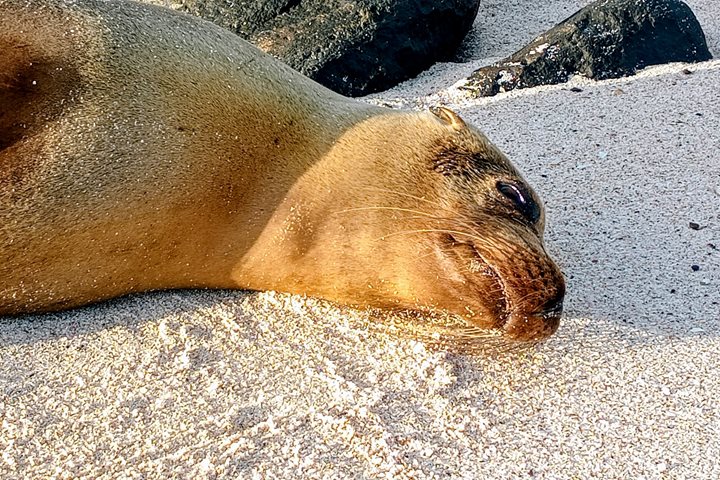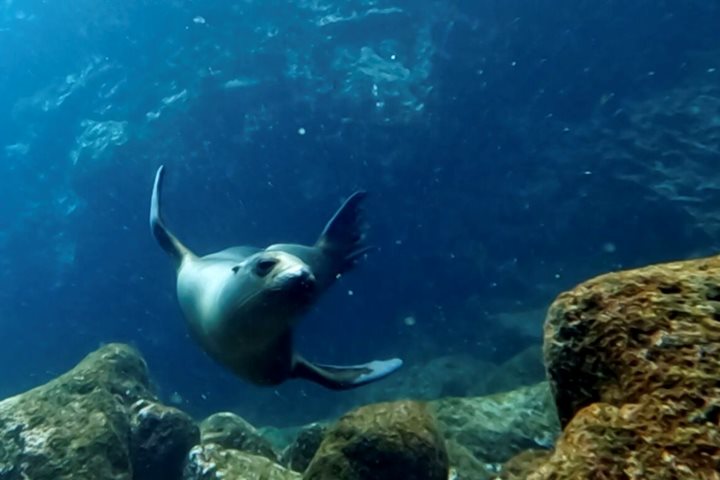Early in the morning, we visited San Cristobal Island. It was a windy day, but disembarkation was easy at Punta Pitt, a nice greenish beach with particles of olivine that sparkled like little diamonds. What a fantastic landscape we had during the walk inside a volcano. Along the trail we founded blue-footed boobies, and eventually red-footed and Nazca boobies as well. Afterward, we had a nice breakfast followed by snorkeling on a beautiful morning. Next, we sailed south for two hours to get to Cerro Brujo, one of the most amazing beaches of Galapagos, with sand like soft flour that never gets hot. It is also home for many sea lions and birds. The end of the day also meant the end of this Galapagos escape as National Geographic Islander II circumnavigated Kicker’s Rock.
- Daily Expedition Reports
- 13 Jun 2023
San Cristóbal Island: Punta Pitt and Cerro Brujo, 6/13/2023, National Geographic Islander II
- Aboard the National Geographic Islander II
- Galápagos
Franklin Ramirez, Naturalist
Edison Franklin Ramirez was born in one of the new provinces of Ecuador, Santo Domingo de los Sáchilas, also known as Santo Domingo de los Colorados; after the local ethnic group that uses a red dye made from achiote (from annatto seeds) to color the...
Read MoreShare Report
Galápagos Escape: An 8-Day Voyage
VIEW ITINERARYRelated Reports
6/23/2025
Read
National Geographic Islander II
Española Island
Today we visited Española Island, the southernmost—and one of the most spectacular—of all the Galápagos Islands. Known for its unique wildlife and dramatic landscapes, Española offered us a day full of unforgettable encounters. In the morning, we landed at Gardner Bay, where a long stretch of white coral sand welcomed us. Galápagos sea lions lounged along the shore, completely unfazed by our presence. Offshore, we snorkeled in the clear waters among colorful reef fish and Pacific green sea turtles. Playful sea lions swirled around us like underwater acrobats. In the afternoon, we explored Punta Suárez, one of the best wildlife viewing sites in the entire archipelago. The trail led us through colonies of Nazca boobies and blue-footed boobies, some engaged in nesting or courtship dances. We also witnessed waved albatrosses, many sitting on eggs or gliding in the wind above the cliffs. The highlight for many was watching a pair of albatrosses perform their elaborate, synchronized courtship ritual, full of beak clacking and head swaying. As we approached the cliff’s edge, we were treated to the dramatic sight of waves crashing against the rocks and the famous blowhole, which sent bursts of water high into the air. With seabirds soaring overhead and marine iguanas sunbathing in every direction, the magic of Española was on full display.
6/22/2025
Read
National Geographic Islander II
Floreana Island
Today the guests of National Geographic Islander II had a chance to snorkel at Champion Islet, just off Floreana Island. It was a breathtaking expedition to one of the most vibrant marine ecosystems in the Galapagos. As soon as we slipped into the water, we were greeted by schools of colorful fish and playful Galapagos sea lions.

